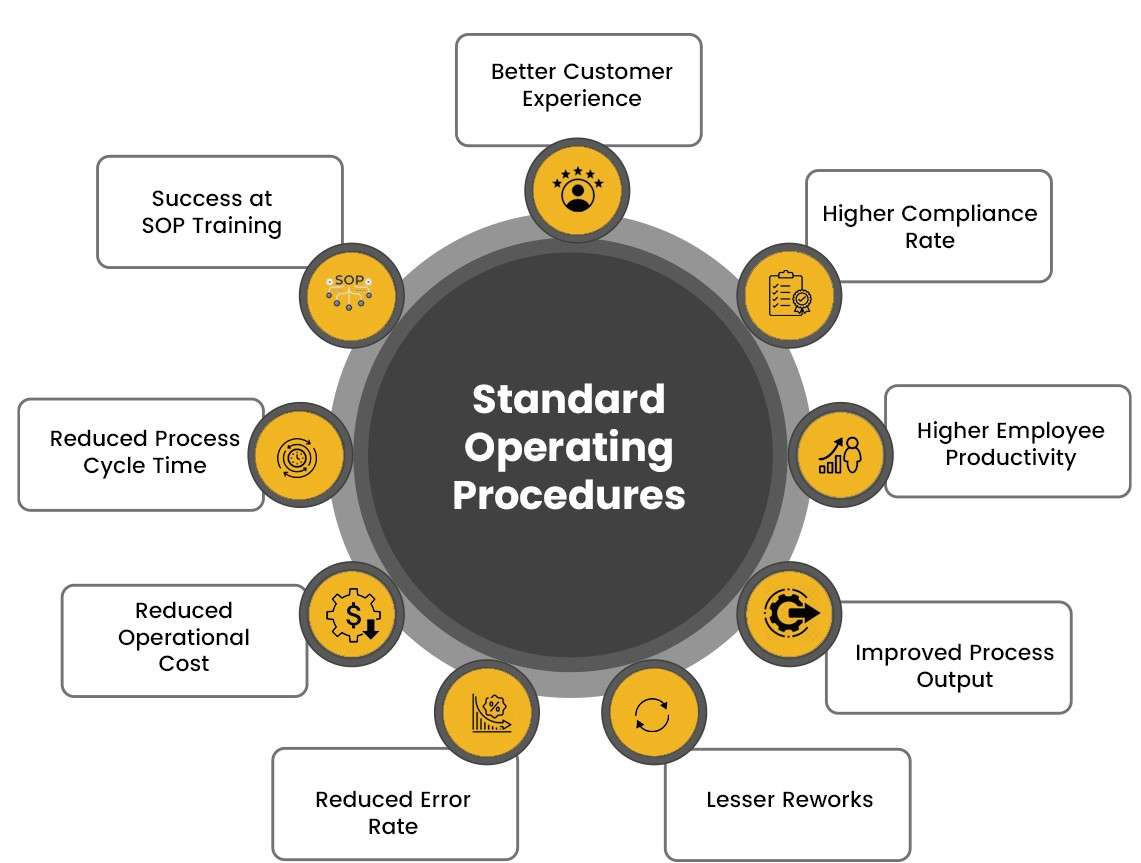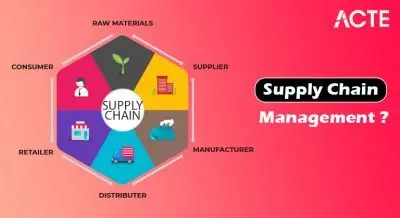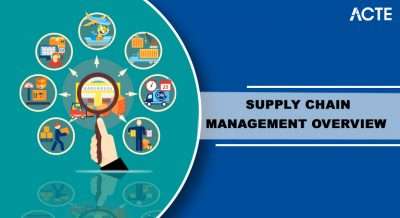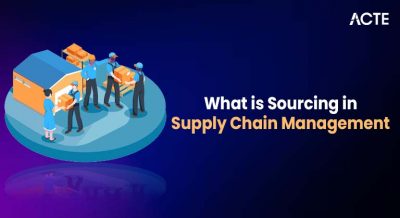
- Introduction to SOP in Supply Chain Management
- Importance of SOPs in Supply Chain
- Key Components of a Supply Chain SOP
- Step-by-Step Process to Create an SOP for Supply Chain Management
- Best Practices for Implementing Supply Chain SOPs
- Common Challenges in SOP Management
- Case Study: Successful SOP Implementation in Supply Chain
- Conclusion and Future Trends in Supply Chain SOPs
Introduction to SOP in Supply Chain Management
An Introduction to SOP in Supply Chain Management highlights the essential role that Standard Operating Procedures (SOPs) play in streamlining operations, improving efficiency, and reducing risks across the entire supply chain. SOP for Supply Chain Management acts as a structured guideline for handling procurement, inventory, production, logistics, and delivery processes with consistency and clarity. In logistics and supply chain management SOP, every step is documented to ensure transparency and minimize delays, errors, and miscommunication among teams. Whether it’s managing vendor relations, scheduling shipments, or responding to disruptions, an effective SOP supported by PMP Training fosters accountability and smoother coordination between departments. Additionally, SOPs are critical tools in supply chain risk management, helping businesses anticipate and respond to disruptions such as supplier failures, transportation delays, or global crises. By establishing well-defined protocols, organizations can mitigate financial loss, enhance customer satisfaction, and ensure compliance with industry regulations. These procedures also aid in onboarding new employees and standardizing training across locations. As the complexity of global trade increases, having a robust SOP for Supply Chain Management is not just best practice, it’s a competitive necessity. It provides a foundation for agility and continuous improvement in an environment that demands speed, accuracy, and adaptability.
Are You Interested in Learning More About PMP? Sign Up For Our PMP Certification Training Today!
Importance of SOPs in Supply Chain
- Enhance Logistics Management Efficiency: SOPs offer clear instructions for handling transportation, warehousing, and distribution, improving delivery timelines and reducing operational bottlenecks.
- Support Standardization and APICS CPIM Practices: Following globally recognized frameworks like APICS CPIM, SOPs drive consistency in planning, production, and inventory control across supply chain functions while aligning with effective Human Resource Management practices for team coordination and efficiency.
- Enable Smooth SAP Supply Chain Integration: SOPs assist in aligning business workflows with SAP supply chain modules, ensuring accurate data entry, reporting, and automation.
Standard Operating Procedures (SOPs) are essential in maintaining efficiency, consistency, and compliance across supply chain operations. They help streamline logistics management, ensure clarity in communication, and support overall business continuity. In an increasingly complex global supply chain, SOPs serve as the backbone of operations by aligning teams, technologies, and processes.

- Strengthen Supplier Management Protocols: SOPs help standardize vendor evaluation, onboarding, and compliance, improving supplier management and collaboration.
- Reduce Risks in the Global Supply Chain: SOPs prepare teams to respond to disruptions such as trade issues, natural disasters, or demand fluctuations in the global supply chain environment.
- Improve Training and Workforce Efficiency: Documented procedures enable quicker onboarding and better performance, especially when managing logistics or using enterprise tools like SAP.
Key Components of a Supply Chain SOP
A well-crafted Supply Chain SOP (Standard Operating Procedure) serves as a foundational document that outlines the step-by-step processes required to manage and optimize end-to-end supply chain functions. Key components of a supply chain SOP include process documentation, roles and responsibilities, compliance standards, and performance metrics. These elements ensure seamless coordination across procurement, production, warehousing, and distribution. In logistics management, SOPs detail transportation routes, carrier selection, and delivery timelines to reduce delays and improve service levels. Incorporating industry best practices, such as those outlined in APICS CPIM certifications, adds a structured approach to inventory control, demand planning, and material requirements. With advanced ERP tools like SAP supply chain, SOPs help standardize data handling, automate workflows, and maintain system accuracy while supporting teams to Learn Objectives of Management Accounting for better financial decision-making. Effective SOPs also emphasize supplier management by clearly defining vendor qualification processes, communication protocols, and risk mitigation strategies. In the context of a global supply chain, SOPs address cross-border regulations, customs procedures, and contingency planning to handle international complexities. Additionally, measurement metrics such as lead time, order accuracy, and fill rates are included to track performance and enable continuous improvement. Together, these components empower organizations to operate with efficiency, transparency, and resilience in a rapidly evolving global market.
To Explore PMP in Depth, Check Out Our Comprehensive PMP Certification Training To Gain Insights From Our Experts!
Step-by-Step Process to Create an SOP for Supply Chain Management
- Define the Objective and Scope: Start by identifying the purpose of the SOP for Supply Chain Management, what process it covers, who it applies to, and the expected outcomes.
- Map the Current Workflow: Document existing procedures in logistics and supply chain management SOP, including procurement, inventory, order fulfillment, and delivery steps, while integrating insights from PMP Training for enhanced project execution and control.
- Identify Roles and Responsibilities: Clearly assign tasks to individuals or departments, ensuring everyone understands their role in maintaining process flow and minimizing risks.
Creating an effective SOP for Supply Chain Management involves clearly defining workflows, responsibilities, and control measures to ensure consistency and efficiency across operations. A well-documented SOP helps reduce errors, improve compliance, and strengthen supply chain risk management. Below is a step-by-step approach to creating a robust SOP for logistics and supply chain functions:

- Incorporate Compliance and Risk Protocols: Integrate guidelines for supply chain risk management, such as quality checks, supplier verification, and emergency response steps.
- Standardize Procedures with Detailed Steps: Break down each task into actionable, easy-to-follow instructions to ensure consistency and eliminate guesswork across teams.
- Review, Approve, and Train: Get stakeholder approval, update as needed, and conduct training to ensure that the SOP is understood and implemented effectively.
- Lack of Standardization Across Regions: In a global supply chain, different regions may follow varied practices, making it difficult to enforce uniform SOPs across all locations.
- Outdated or Incomplete Documentation: Many companies struggle to keep SOPs updated with evolving technologies like SAP supply chain solutions, leading to confusion and inefficiencies, especially when Key Finance Manager Responsibilities such as budgeting, cost control, and financial reporting are not integrated into the process.
- Poor Integration with Logistics Management: Without proper alignment, SOPs may not reflect real-time logistics constraints, resulting in delays and miscommunication in logistics management.
- Limited Training and Awareness: Teams unfamiliar with SOPs or lacking APICS CPIM-based knowledge may fail to follow procedures accurately, affecting consistency and compliance.
- Supplier Management Conflicts: Misaligned expectations or communication gaps with vendors can hinder effective supplier management and compromise SOP execution.
- Resistance to Change and Updates: Employees may resist adapting to revised SOPs, especially when changes impact daily routines or demand learning new systems or protocols.
Best Practices for Implementing Supply Chain SOPs
Implementing SOP for Supply Chain Management effectively requires a strategic approach that balances clarity, consistency, and adaptability. One of the best practices is to align SOPs with organizational goals and ensure that each procedure supports overall supply chain efficiency. Every logistics and supply chain management SOP should be tailored to reflect actual workflows, integrating detailed instructions for procurement, inventory, transportation, and order fulfillment. Collaboration across departments is essential engaging procurement, logistics, IT, and warehouse teams ensures the SOP reflects real-time challenges and operational needs while aligning with the Nature of Managerial Economics to support strategic and cost-effective decisions. Another best practice is leveraging digital tools to automate SOP processes and track performance metrics, helping teams to monitor progress and identify bottlenecks. Training is critical every team member should clearly understand their role and the expectations defined in the SOP. To strengthen supply chain risk management, SOPs should include contingency plans for supplier delays, transportation disruptions, and demand fluctuations. Regular reviews and updates are also vital to ensure the SOP evolves with market trends, regulatory changes, and technological advancements. Additionally, involving stakeholders in periodic evaluations fosters continuous improvement and compliance. Ultimately, implementing SOPs systematically ensures smoother coordination, minimizes errors, and builds resilience across the entire supply chain network.
Want to Pursue a PMP Master’s Degree? Enroll For PMP Master Program Training Course Today!
Common Challenges in SOP Management
Managing SOPs within the supply chain can be complex due to the dynamic nature of operations and the involvement of multiple stakeholders. While SOPs aim to bring structure and consistency, several challenges often arise, especially in large-scale and global supply chain environments. Below are key challenges faced in SOP management:
Case Study: Successful SOP Implementation in Supply Chain
A leading global electronics manufacturer successfully transformed its operations through the strategic implementation of an SOP for Supply Chain Management. Facing frequent delays, inconsistent order fulfillment, and rising operational costs, the company conducted a comprehensive audit to identify gaps in its supply chain processes. By developing a detailed logistics and supply chain management SOP, they established standardized procedures for procurement, inventory control, transportation, and customer delivery. The SOP clearly defined roles, timelines, and performance metrics, ensuring all departments operated with alignment and accountability. A major focus was placed on strengthening supply chain risk management, with contingency plans developed for supplier disruptions, shipment delays, and quality failures, supported by insights from What is Business Research Methods And Types to ensure data-driven decision-making and effective strategy formulation. Additionally, real-time monitoring systems were integrated to track logistics milestones and flag anomalies. Employee training programs ensured that every team member understood and adhered to the new procedures. As a result, the company saw a 25% reduction in delivery lead time, a 30% improvement in inventory accuracy, and significantly fewer supply chain disruptions. The successful SOP implementation not only improved operational efficiency but also enhanced customer satisfaction and resilience against market volatility. This case highlights the tangible benefits of a well-structured SOP for Supply Chain Management when backed by leadership support and continuous improvement efforts.
Preparing for a PMP Job Interview? Check Out Our Blog on PMP Interview Questions and Answers
Conclusion and Future Trends in Supply Chain SOPs
In conclusion, well-defined SOPs are indispensable for ensuring efficiency, accuracy, and resilience in today’s fast-evolving supply chains. From logistics management to procurement and distribution, SOPs provide the clarity and consistency needed to streamline operations and support strategic decision-making. As businesses expand into the global supply chain, the complexity of managing multiple suppliers, regulations, and customer expectations underscores the need for robust SOP frameworks. Incorporating best practices from industry standards like APICS CPIM and PMP Training ensures structured planning, inventory control, and process optimization. The integration of digital tools, particularly SAP supply chain solutions, has further transformed SOP implementation, offering automation, real-time visibility, and data-driven insights. As supply chains continue to globalize and digitize, the future of SOPs will shift toward adaptive, AI-driven models that can respond dynamically to disruptions and market demands. Enhanced supplier management will also become critical, with SOPs evolving to include more collaborative and performance-based vendor engagement strategies. Moreover, sustainability and compliance will increasingly shape SOP development, pushing organizations to embed environmental and regulatory checkpoints into their workflows. Ultimately, the future of supply chain SOPs lies in continuous improvement, digital integration, and agility ensuring businesses remain competitive, compliant, and customer focused in a rapidly changing world.





